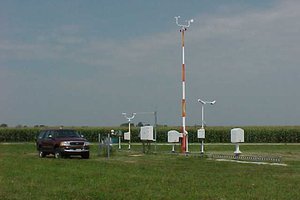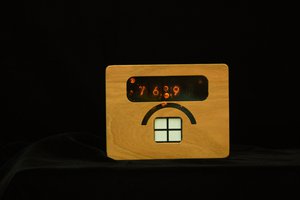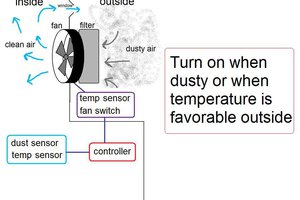I started with a MQ-2 gas sensor as it seemed to be what I was after (multiple sources I found referenced using it for detecting smoke). While it technically worked, the readings it gave tended to drift quite a bit (it frequently would start giving readings indicative of a lot of smoke for no particular reason) and of particular issue was the fact that it was sensitive to specific gases in addition to smoke. Of particular interest was LPG, which happens to be the propellant for the cooking spray I frequently used. This would result in the fan ramping to high every time I used the spray, even if I was quite a distance away.
After having disabled the smoke sensor and only using the temperature sensor (which didn’t prove to be enough of an indicator by itself), I finally stumbled upon Dzl’s post in regards to getting analog smoke readings from most any residential smoke alarm. I ultimately bought one (~$10) at the local hardware store and after some time carefully taking it apart (mine had more electrical components hiding the chip than his did) was able to get to the chip and solder a wire to the pin he referred to. After wiring up the power wires to run off of the 5V from the Particle Photon, and cutting the wires to the buzzer I was able to get the analog readings without any issues.
After some initial calibration in my garage I was able to get some rough values. I subsequently soldered everything up and 3D-printed some enclosures for both the Particle Photon Relay Shield and my Sensors. I ran one test seasoning a cast-iron pan to generate smoke and have been happy with the calibration values I arrived at, although I may tweak it over time if warranted.
 Ben Brooks
Ben Brooks


 sparks.ron
sparks.ron
 Minimum Effective Dose
Minimum Effective Dose

 shlonkin
shlonkin
May want to you please tell me greater statistics about the vacuum pumps and silicone vape used for this? Specifically, the sort of pumps and wherein you ordered them from?